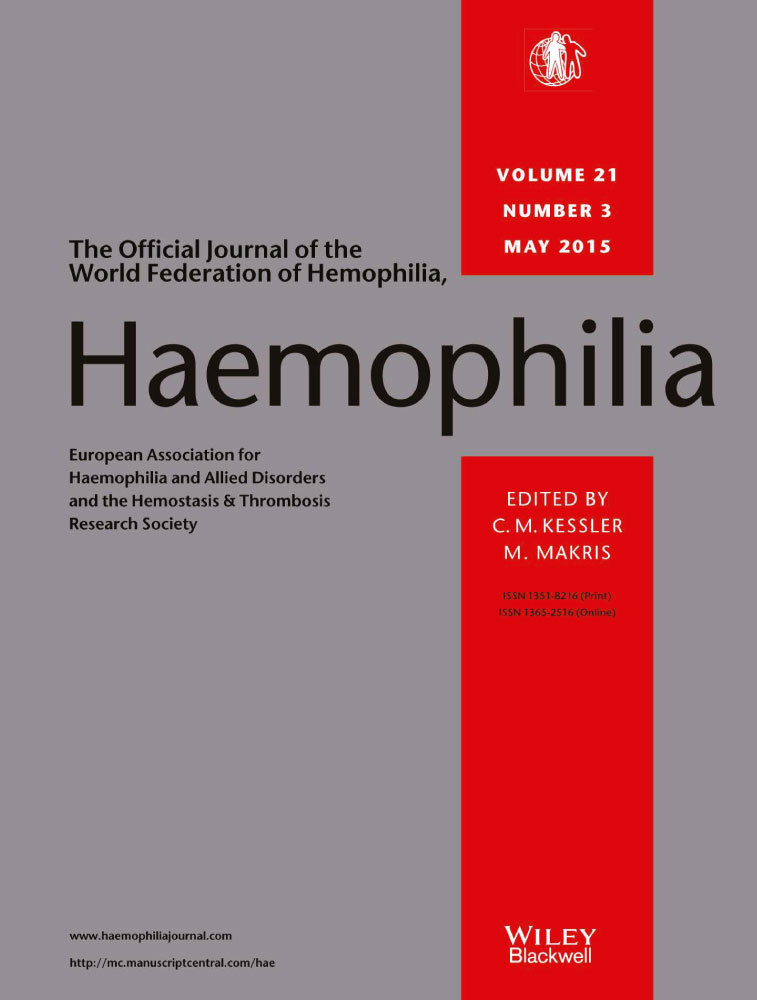FEIBA in the treatment of acquired haemophilia A: Results from the prospective multicentre French ‘FEIBA dans l'hémophilie A acquise’ (FEIBHAC) registry
Summary
Factor VIII inhibitor bypass activity (FEIBA) is a recommended first-line bypassing agent for bleeding episodes in patients with acquired haemophilia A (AHA). Due to the low incidence of AHA, available clinical data on FEIBA treatment are limited. The study aim was to delineate practice patterns in FEIBA treatment of AHA patients, the haemostatic efficacy of FEIBA, including criteria for its assessment, and safety. A prospective registry was established of AHA patients receiving FEIBA for bleeding episodes or prophylaxis at the time of invasive procedures. Data were collected at 16 participating centres in France. Patients were followed up for 3 months. Haemostatic efficacy, FEIBA regimen and FEIBA-related adverse events were documented. Thirty-four patients averaging 81.8 years old with standard deviation (SD) 8.1 years were included in the study: 33 for acute bleeding and one for haematoma evacuation. The mean initial dose of FEIBA for acute bleeding was 75.4 U kg−1 (SD, 7.7 U kg−1), most often administered twice daily, and the median duration of FEIBA treatment was 4.0 days (interquartile range, 2.2–8.0 days). FEIBA was effective in managing 88.0% of bleeding episodes (95% confidence interval, 75.8–94.5%). No baseline variables influencing treatment response could be identified. The sensitivity and specificity of an objective haemostatic efficacy scale in predicting sequential investigator assessments of haemostatic efficacy were 45.3% and 84.1% respectively. Four patients experienced a total of six serious adverse events possibly related to FEIBA. In the first prospective study specifically focused on FEIBA treatment of patients with AHA, 88.0% of bleeding episodes were effectively managed.




